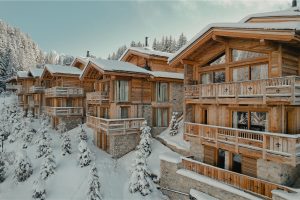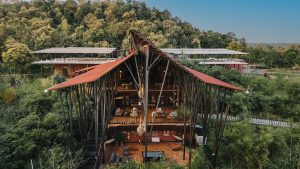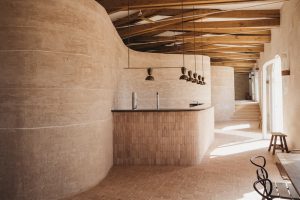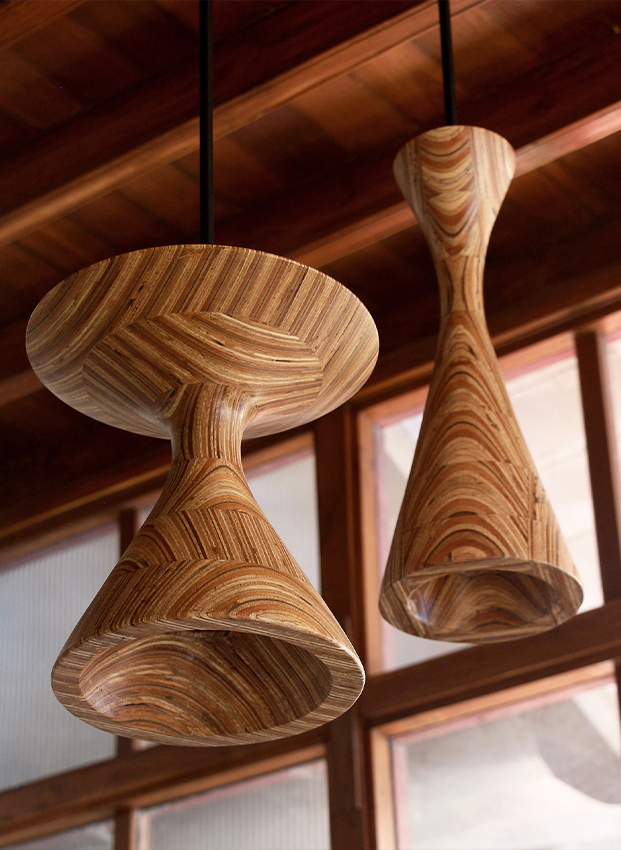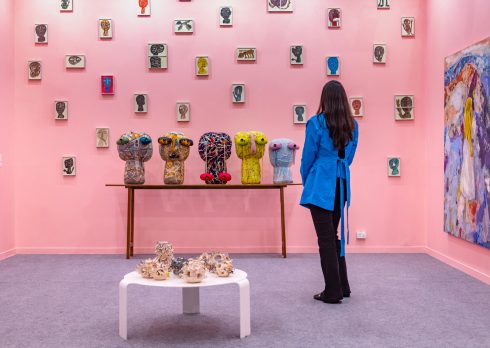Meet The People Shaping A Sustainable Future For Havelis In India
Havelis of Northern India, once icons of opulence, stand as reimagined repositories of legacy, blending colonial influences with classic splendour, showcasing adaptive reuse and sustainable design.
- 19 Feb '25
- 4:51 pm by Simran Almeida
India pompously carries its legacy of rich culture, ancient traditions, and a distinct architectural past willed by majestic palaces—and Havelis that continue to whisper their regal tales. “These Havelis gained prominence during the Mughal period but rose to glory and hype during the colonial period,” says Atul Khanna Founder & Curator of Kathika Cultural Centre. As Sarah Tillotson mentions in her book, ‘Indian Mansions: A Social History of the Haveli,’ “These houses, the major building blocks of old Indian towns, are known by many different names, the choice of name varying from district to district; but they are often called as ‘Havelis.’ This word is of uncertain origin with various dictionary definitions, but among the alley of old North Indian towns its use suggests a distinguishable type of inward-looking courtyard house.” However, these capriciously planned multi-storey assemblies have already lived many lives in the country’s history, dating back to 3300 BCE during the Indus Valley Civilization.
These architectural marvels corralled around massive courtyards with intricately carved facades, elaborate frescoes, delicate jharokhas and mystifying interiors, are steadfast accomplices to the hedonistic lives of affluent merchants, noble families, and royalty. From serving as evidence of India’s cultural heritage to becoming a dilapidated backdrop for many Indian horror movies, these once-magnificent Havelis now stand weathered with climate changes and the nuisance of tourists. Enter the custodians who etch a slightly different tale on every stone, repurposing the Havelis to house contemporary expressions. DP traces three repurposed havelis that now contain contemporary spaces, seamlessly entwining the past and the present.
1. Kathika Haveli: A Cultural Centre In New Delhi
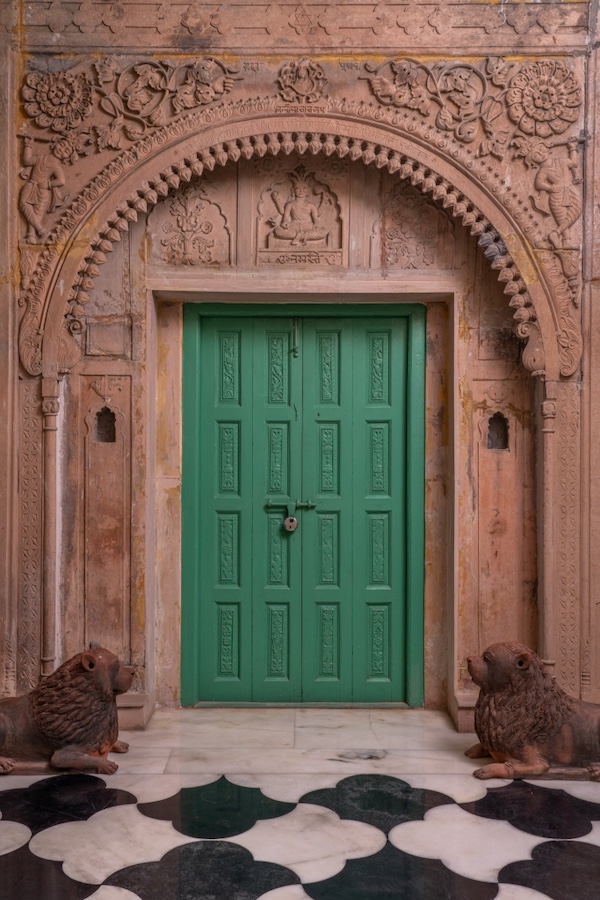
The compelling, vintage charm of Old Delhi, paired with an article in a local newspaper mentioning the dilapidated conditions of the Havelis there, led Mr Atul Khanna down memory lane, culminating in the restoration of the Kathika Haveli. Nestled in Kucha Pati Ram in Sita Ram Bazaar, Old Delhi, this 19th-century Haveli currently functions as a cultural centre with exclusive spaces for performing arts, workshops, screenings, culinary experiences, photography, and heritage ‘baithaks’ (seatings). Having spent his nascent years in a magnificent Old Delhi haveli, Khanna was well acquainted with its rich legacy, simplifying the restoration of the Haveli’s two buildings over an eight-year stint. “The knowledge of Shekhawati Havelis (preserved by Khanna) with the help of traditional masons led to conservation, restoration, and establishment of Kathika Cultural Centre,” explains the team. “To make any conserved heritage space sustainable, it is best if they are given adaptive reuse and turned into centres of art and culture,” notes Khanna.
Also Read: This Sprawling Manor Reimagines Goa’s Plush Heritage With An Eco-Conscious Design
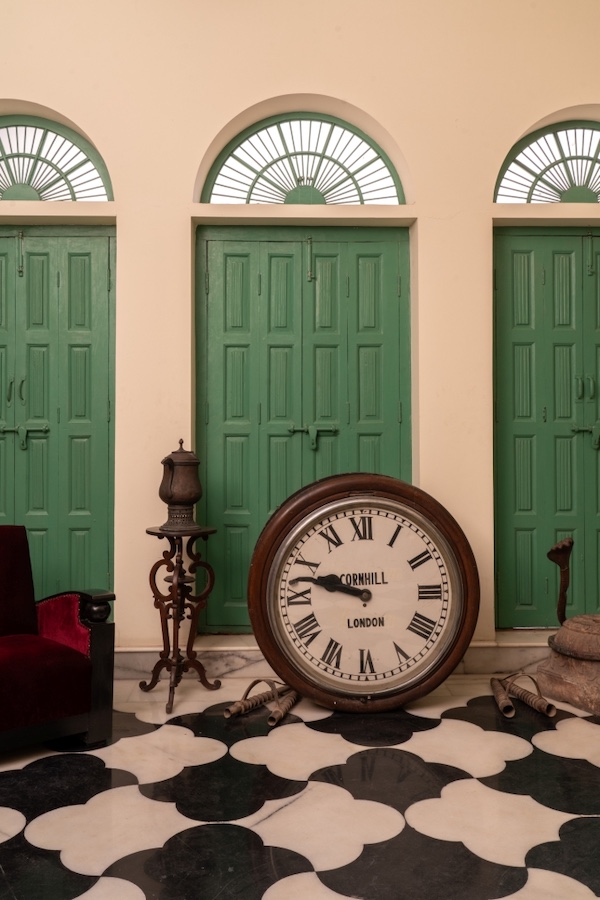
“Heritage structures are vulnerable to unstable architectural or structural integrity,” Khanna reveals. Consequently, this haveli features a single entrance providing access to both buildings, leading to the quintessential architectural element—a central courtyard—surrounded with pointed arches at the heart, serving as a beacon of natural light and ventilation. “If the architecture of the Havelis is studied closely, one will understand that it has always been smart and sustainable architecture, built in a fashion where a large number of people can be accommodated,” Khanna reiterates. Restoring the Haveli into a cultural centre abets the concept of communal living, sparking conversations and bringing together an eclectic mix of artists, art enthusiasts and locals. Much like the Havelis of yore, it transcends mere architecture—becoming a community hangout space. The deep-rooted sense of community is reflected through various initiatives, notably ‘The Kindness Meal’—a multi-sensory dining experience hosted at the Neem ki Haveli, Kathika Cultural Center and Museum, during the India Art Fair 2025.
Also Read: A Minimalist Home In Ludhiana, Punjab That Encourages Introspection
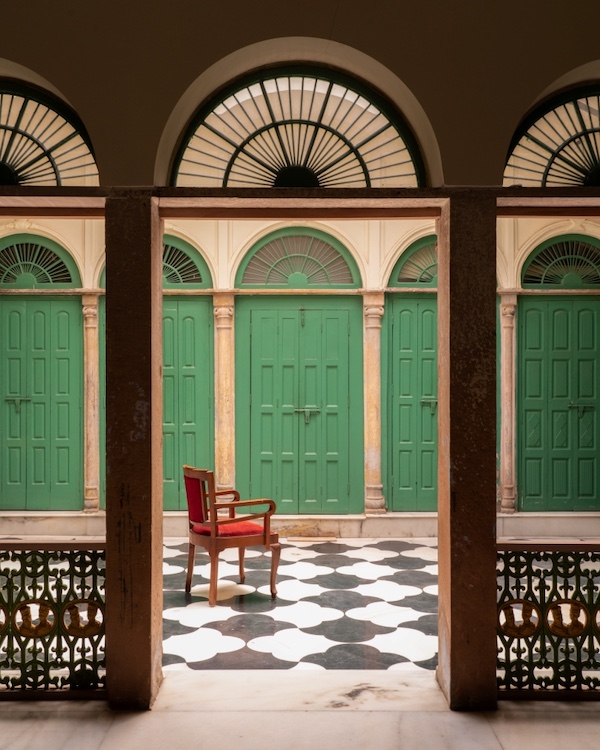
In collaboration with conservation architects Bhawna Dandona and Aishwarya Tipnis, the intricately carved stone walls, vibrant chandeliers—a recurring component in Delhi’s contemporary style—and chequered marble flooring revive the dazzle of the 19th century. “Heritage spaces have a long lineage of historical background, which, over the centuries have shaped the cultural identities of the communities. Any form of structural alteration is often met with resistance by these (local) communities,” Khanna explains. The community’s resistance to changes is dealt with through community engagement through initiatives like the Community Outreach Program and heritage education at Kathika Cultural Centre, which fosters local ownership, appreciation, and understanding of the community’s history.
Here, walls adorned with Raja Ravi Varma prints, pay homage to the havelis’ tradition of patronage for calendar art—embodying the cultural and past artistic preferences. While sustaining even the smallest details, Khanna adds, “Many heritage Havelis have been replaced by modern structures; frescoes or carvings on the walls, covered with fresh paint or concrete facades.” This haveli now travels between the past and the present where every restored detail hums with history, proving that heritage isn’t just something we preserve—it’s something we bring to life even after dilapidation.
2. Bichli Haveli: A Heritage Resource Center In The Making In Rajasthan
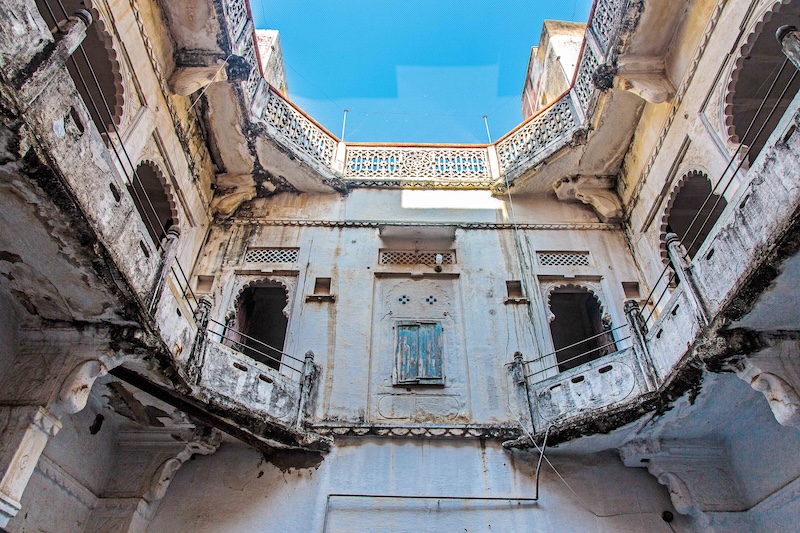
The sun-soaked sands of Rajasthan cradle accounts of opulent palaces that once stood. Amidst the gamut of heritage structures awaiting restoration, a petite 140-year-old haveli in Rajasthan’s Udaipur city, owned by the local Bachhawat Mehta clan, was salvaged by one of its own, when restoration began in 2017. Currently ongoing restoration, this Haveli intends to trace the roots of the inhabiting community and its ethos. “Rajasthan, particularly Udaipur, was a vibrant centre for trade and commerce, and Havelis often reflected the wealth and status of their merchant families,” notes Malvika Mehta, founder of MLIME or more than lime plaster.
Aptly dubbed Bichli Haveli, it captures the essence of the city’s heritage for Malvika Mehta, of MLIME—who restored the Haveli and is a resident of it. Mehta, a practising architect herself, set up MLIME——a brand offering sustainable lime-based building solutions, from binders to pigments and fibres. To her, this childhood home is a harmonious tapestry of regal charm, deft craftsmanship, and a history lesson in trade, politics, and the vibrant rhythms of local traditions. “These efforts have often begun with small local communities—artisans who once worked in the Havelis, and former residents who have witnessed the decay of these structures,” explains Mehta.
Also Read: Inside A Lush Penthouse In Bangalore Echoes The Spirit Of A Modern-Day Eden
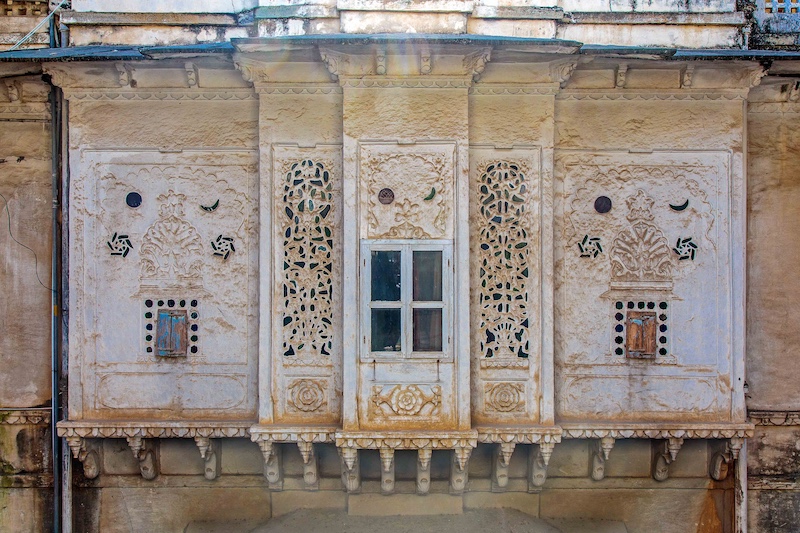
“The conservation of havelis like Bichli Haveli is not only a task for architects or historians but has been deeply influenced by grassroots movements,” Mehta reveals. She adds, “While some have been repurposed into museums, hotels, or cultural centres, many remain in disrepair due to a lack of sufficient funds for restoration and the encroachment of modern developments around them.”
The Haveli’s façade with an intricately carved ‘jharokha’—a design element prominent in Rajasthani architecture—reinforced by ornate brackets leads into the quintessential space, a capricious courtyard. “The rapid growth of cities means that many havelis are being squeezed out by modern buildings, disrupting their surroundings and threatening their long-term viability,” muses Mehta, referring to the miniaturisation in contemporary architecture. With stained glass windows, carved arches and ornate seating niches, this haveli, when restored, aims to bring numerous subsidies to the community.
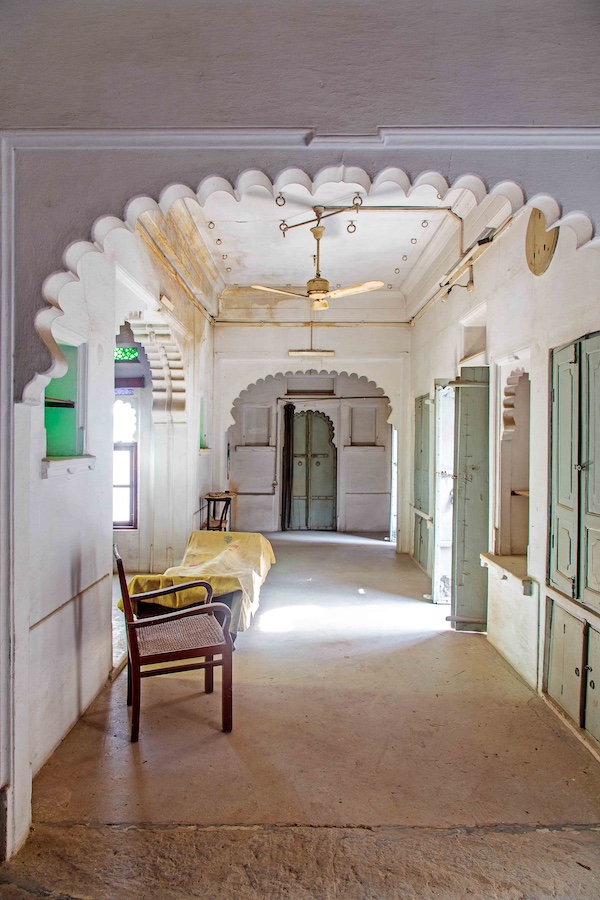
In reverence to the past, the restoration uses similar materials originally used 140 years ago, such as stone masonry, mud mortar, and lime plaster. “The use of sustainable materials like MLIME, combined with a deep understanding of the haveli’s cultural and historical significance, ensures that this architectural gem continues to stand proudly for generations to come,” Mehta reiterates. Reviving the vibrant and intricate frescoes—a quintessential technique used in Shekhawati havelis—depicting scenes from mythology, daily life, or the owner’s lineage providing a portal into the rich cultural heritage. Mehta remarks,
“Conservationists play a key role in guiding the technical aspects of the restoration, ensuring that traditional materials and methods are employed.” With a focus on achieving the perfect concoction of the original material, this restoration project becomes a sustainable archetype. Contemporary edifices borrow heritage from the havelis—lofty ceilings for ventilation, courtyards drenched with natural light, and locally sourced materials that echo sustainability in every detail.
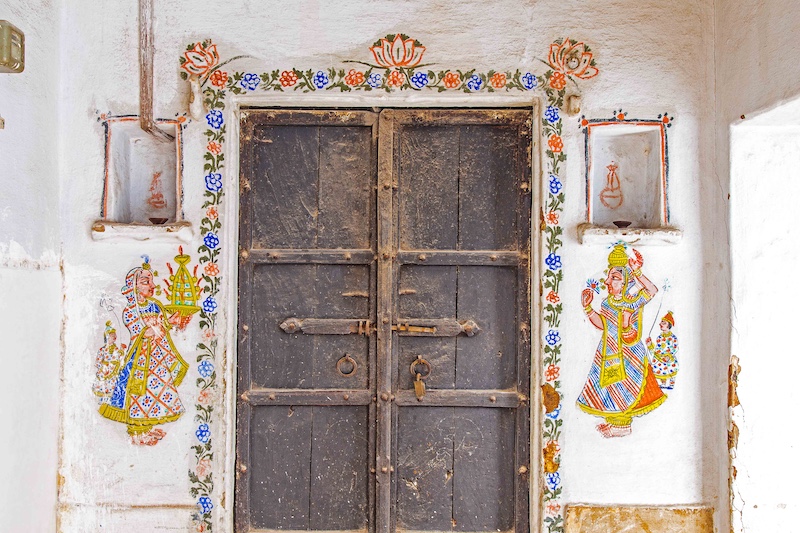
3. Mangaldas Ni Haveli II: A Snug Homestay In Gujarat
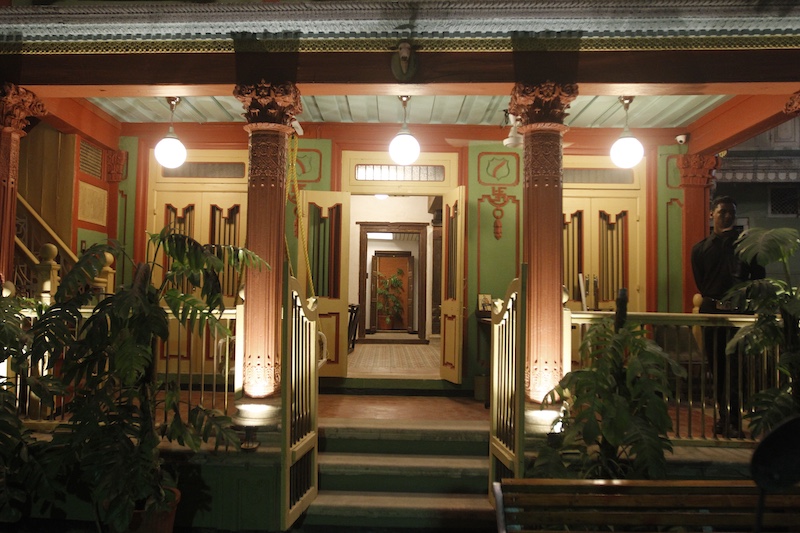
A diplomatic synergy between the two nations—India and France—intertwined with Abhay Mangaldas’ steadfast commitment to heritage conservation—served as a backdrop for the Haveli’s restoration. Abhay Mangaldas, founder of House of MG, reflects on the current state of Ahmedabad’s Havelis, saying, “They are now residences for people who cannot afford to shift to newer alternatives or serve as godowns and shops.” However, with the increasing charm of the old Ahmedabad and its distinct design style, Mangaldas took it upon himself to restore a revered haveli. “I purchased Mangaldas ni Haveli 1 in 2008, it lay unattended for a
few years and finally, I completed renovations in 2014 and opened it as a small BnB,” reveals Mangaldas.
Located in the old city of Ahmedabad amidst narrow alleys and bustling bazaars, this 150-year-old boutique property is doused in heritage with a side of history lesson. “While this renovation was ongoing, people would approach me with their havelis to sell, as there was no interest in the old city houses that were already in disrepair and gradually being abandoned,” Mangaldas reveals. Giving the idea of the Haveli’s grounds, he remarks, “Mangaldas ni Haveli II was a cluster of three-row houses in a gated ‘pol’ with an open space in front.”
Mangaldas bought the other Havelis in 2011, to salvage them from dilapidation. He recalls, “I broke down two of them with no heritage significance to make room for a courtyard and a kitchen and opened it in 2016 as a six-room hotel and a restaurant.” He further adds, “(This Haveli features) 19th-century architecture, decorated with stucco work on the facade and one of only two circular wrought iron balconies in the old city,” explains Mangaldas.
Consequently, a flamboyant, verdant, crimson façade and pastel windows materialise, whispering tales of its previous owners amongst an array of contemporary concrete structures. A wooden door opens into a courtyard—a ventilation technique, prevalent in the hot climate of Gujarat—which now serves as a café, and forms the heart of the Mangaldas Ni Haveli II. This heritage-inspired café, with paved brick flooring and a street-style menu, exudes a blend of rustic and contemporary ambience.
Also read: The Complex History Of Chandigarh Chairs
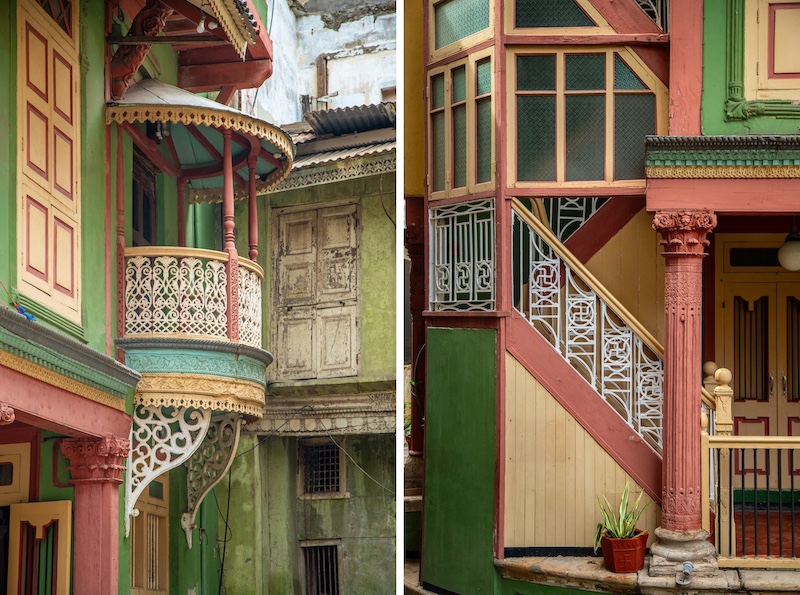
With historical elements; like cast-iron latticework, panelled doors, and glass-stained panes paired with mid-century modern furniture and contemporary art, this Haveli strikes a perfect balance between heritage and modern design. Mangaldas states, “The range of architecture seen in Ahmedabad’s Pol Houses reflects the varied influences on local merchants over the years, with a strong influence of the British post-18th century examples.”
Paying homage to this traditional layout of interconnected living spaces, the rooms open into the central courtyard or onto balconies, allowing for a seamless indoor and outdoor connection. Further, Mangaldas shares, “Seven years after Ahmedabad was announced as a UNESCO World Heritage City in 2017, the condition of the certified houses, barring a handful, continues to deteriorate, with a few breaking down each year.” He adds, “Unless public infrastructure is greatly improved, heritage walks, rickshaw tours, or food events are the only ways to attract people to visit these areas.”
According to Malvika Mehta, “Havelis have historically served as more than just residential spaces. They were cultural hubs where art, music, literature, and politics flourished.”
Currently, facing the dual encumbrances of urbanisation and globalisation, the Havelis of Northern India stand at a crossroads. These stately structures, once the communities’ pièce de résistance, now grapple under the towering steel of modern cities. Yet, within this clash of eras, there lie an array of custodians who reimagine the role of these culturally rich assemblies with a dash of tradition with a pinch of modern magic. Under their deft hands, these Havelis are invigorated as living testaments to the past, where old relics and design elements proclaim the importance of heritage with intricate carving and weathered frescos.










